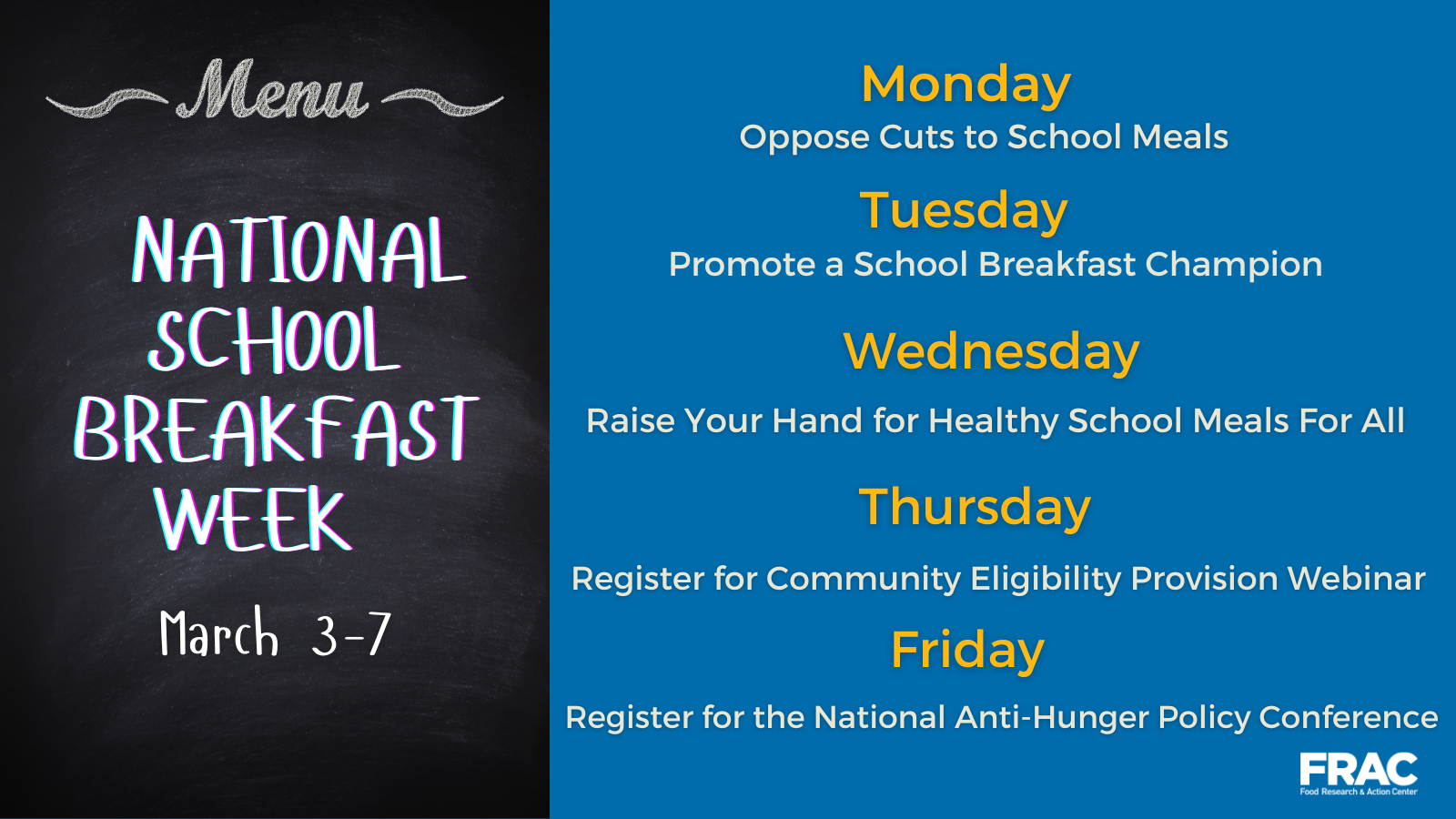Published February 28, 2025
March 3–7 is National School Breakfast Week, a celebration recognizing the critical role school breakfast plays in students’ health and learning. Research shows that school breakfast improves children’s nutrition, attendance, behavior, and academic performance; however, barriers such as cost and time prevent far too many students from participating in this vital morning meal.
The winning recipe for strong participation in the School Breakfast Program is to offer the meal to all students at no charge and use a breakfast-after-the-bell service model, which incorporates breakfast service into the regular school day. Currently, 60 percent of schools in the U.S. offer free breakfast and lunch to all their students, either through the Community Eligibility Provision (CEP) or because they are in a state with a Healthy School Meals for All policy.
However, policy proposals recently introduced in the Republican-led Congress would make it harder for schools to offer meals at no charge and to implement innovative breakfast programs, thus jeopardizing children’s health and academic success. Last month, House Budget Committee Chair Jodey Arrington (R-TX) proposed $12 billion in cuts to school meals, most notably by dramatically reducing the number of schools eligible to use the Community Eligibility Provision.
CEP allows high-poverty schools to offer all students school breakfast and lunch at no charge. Rather than relying on school meal applications, CEP schools are reimbursed based on their percentage of poverty as determined through the share of students participating in other means-tested programs, such as the Supplemental Nutrition Assistance Program (SNAP).
CEP has been shown to reduce stigma, increase participation in school meal programs, strengthen food security, eliminate school meal debt, and streamline school nutrition operations. Furthermore, CEP supports innovative breakfast service models: Since schools don’t have to collect school meal fees or count each meal served by fee category, it is easier to implement breakfast-in-the-classroom and “grab and go” models that can boost breakfast participation further.
Chair Arrington’s proposal would significantly reduce the number of schools able to use CEP by increasing the eligibility threshold from 25 percent identified student percentage (ISP) — the percent of students eligible for free meals through means-tested programs — to 60 percent ISP. This would reduce children’s access to healthy meals and complicate school nutrition operations.
This National School Breakfast Week, help us celebrate this critical nutrition program, and also the people who make school breakfast possible, and call on Congress to protect and strengthen school meals, not weaken them.
Join the Food Research & Action Center (FRAC) in:
- recognizing School Breakfast Champions in your community;
- raising your hand for Healthy School Meals for All;
- registering for FRAC’s webinar to learn more about CEP; and
- registering for the National Anti-Hunger Policy Conference to continue the conversation around school meals and child hunger.

Visit FRAC’s National School Breakfast Week Resources for tips and tools to use in your promotions. Don’t forget to tag @fractweets on X, LinkedIn, @FracPosts on BlueSky and @fracgram on Instagram so FRAC can amplify your message. Use #NSBW25.

